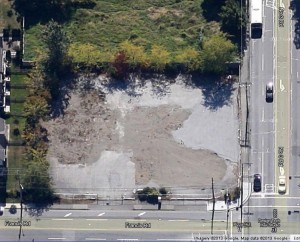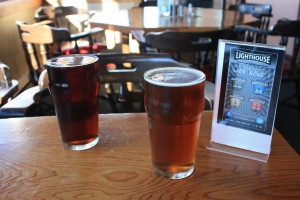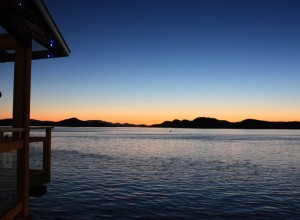I’ve been at the City Councillor thing for a year and a half now, long enough that I have to stop referring to myself as “the new guy”. At some point, I have to stop blaming / giving credit to the previous Council for everything going wrong / right in the City. I suspect (hope?) the steep part of the learning curve is now behind me, and I start directing more of my learning towards the problems I want to see solved, the opportunities ahead. It is also long enough that I should be able to answer the simple question “What do you do?”
I have tried, over the last 18 months, to report out on this blog some of the mechanics of City Council, as it was my goal when running to open up the process a bit, and try to do a better job explaining the sometimes-incomprehensible decisions Council (and the City) make. Recognizing many in the City will disagree with any given decision made by Council, I wanted to at least provide enough information so that they know what they are disagreeing with, and not rely on the few very vocal boo-birds in town who assume a decision is bad only because this Council makes it.
However, this post isn’t about that, it is more about the actual day-to-day duties of a person you pay $40,000 a year (plus Vehicle Allowance!) to represent you, whether you voted for them or not. So here is my summary of the job.
*This is a good time for one of my disclaimers about how everything I write here is my opinion and my viewpoint, and doesn’t necessarily reflect the ideas or opinions of any other members of Council, who are, believe it or not, individual people with their own ideas and biases. Like the rest of this Blog, this is not the “official position” of the City or any entity other than myself.*
Council Meetings:
Council meeting days happen about every two weeks on average. In the spring and fall we meet more often, and we more time off in the summer and around Christmas. The schedule is flexible around work load and stat holiday schedules, but we have about 26-30 meetings a year.
Council meeting days are comprised of a Closed Meeting and an Open Meeting, only the latter of which you see on TV. About 10 times a year (the last meeting of most months), the Open Meeting is coupled with a Public Hearing. We also, at times, have Committee/Taskforce meetings (more on that below) and Council Workshops on these Mondays.
A long Council Monday can be 12 or more hours, with breaks for lunch and dinner. The portion you see on TV is only the Open Meeting and Public Hearing part. On any given meeting day I am at City hall at 9:00am, and typically wander home sometime between 9:00 and midnight.
Council Prep:
We cannot show up at Council Meetings unprepared to discuss the business of the day. Our schedule on Monday is typically pretty stuffed, and we cannot hope to learn enough about the issues on which we will be discussing during that time. On the Friday before the meeting we are delivered (electronically in my case) our “Council Package”. This contains the staff-prepared reports and background info we need to put discussions in context. The Package varies in length, but is typically about 1,000 pages when Closed and Open agenda items are combined.
My practice is to get take a glance at the Package for maybe an hour after I get home from work on Friday or first thing Saturday morning. This allows me to get an idea of what is on the agenda, to determine if it is a 700-page or a 2,000-page week, and to do a first pass over the topics being discussed. From that I can plan out my weekend to assure I have enough time put aside to review at the detail needed, and do any other research I might want to do in order to understand the issue. That is usually when I decide if I have time to do a bike ride on Sunday or attend a Saturday function.
Typically (and this varies quite a bit), I spend about 8 hours on Sunday reviewing the package and taking my notes. My notes form the backbone of the Blog I will eventually write about the week’s Council meeting, but more importantly they create a framework around which I organize my thoughts on the agenda items. This is an old trick from studying during my University years, but I find that if I write a summary of a topic I am trying to learn, it forces me to learn enough to summarize the important points, and to understand what questions I need to have answered yet. Often, you don’t know what you don’t know until you try to write it down.
I print those notes out, so you can see me at Council using my computer screen (where the agenda and reports that make up the Package are) and written notes, along with the extra papers that we receive on Council Day, typically supporting reports that weren’t available Friday, presentation materials, or other relevant documents. My desk is a mess.
Committees and Taskforces:
Like the rest of my colleagues, I serve on several Committees and Taskforces for Council. These each meet anywhere from once a month to once every second month. Most meetings are in the later afternoon, mid-week, after I get off my regular job, and meetings typically last about two hours. With my being on three taskforces and four committees, this adds up to an average of about one meeting a week during the busy months, but not many in the summer (except occasional exceptional meetings, like the Transportation Taskforce last week, and the ACTBiPed next week).
In these meetings, Council members, staff, and stakeholders work through issues, ideas, programs, or proposals, and (hopefully) provide guidance to Council to make better decisions. Prep for these meetings varies greatly, but rarely takes more than an hour. Follow-up on some of the issues that arise at these meetings, and some of the extraordinary meetings, tours or other activities involved with the work these committees are doing takes quite a bit more time.
Community Events: There are various types of community events, some you have to attend, like the Civic Dinner where we thank committee volunteers, some you attend to show support to organizations or people doing good work in the City, some you attend just because they are fun.
This is a challenge for any Councillor’s schedule. We get a lot of invitations, and cannot hope to attend everything. I try to be careful about stretching myself too thin, and end up missing a lot of events I really want to get to. I try to respond to every invitation and send a decline if I cannot make it, but scheduling is an ongoing challenge, as is managing my work and Council calendars while still finding some time to remind @MsNWimby that I exist. The job does not come with a social coordinator, and every calendar app I can find for my phone is worse than every other one. I’m still working on this part…
Constituent Services:
This is a big, but pretty loosely defined group of activities, and each Councillor can make their own decision about how they manage this, and how much time it takes. This is another part of the job that “expands to fill the space available to it”.
Sometimes, a person complains to you about potholes on their street, or the noise from their neighbor’s wind chimes. Sometimes they call you to ask for help with a business license issue, or to complain about a development in their neighbourhood. Sometimes people complain about unfair enforcement of a Bylaw, while others complain about lack of Bylaw enforcement. Some people just want to be heard and the problem acknowledged, some want you to fix things for them.
I try to take an approach to this based on a few principles. I am not there to help people get out of Bylaw requirements, to get their stuff pushed to the front of a line, or to help them get around a process that exists. I am really conscious that procedures and policy exist in government, and that we have professional staff working on directives from Council as translated through their management – they should not have to deal with an individual Councillor coming and telling them how to do their jobs. That said, if a resident or business owner feels that the process is unfair, or that they have received treatment form the City that is not in keeping with City policy or good customer service, I am happy to talk with management at the City and (this is important) get both sides of the story and figure out what went wrong.
It is a delicate balance. Sometimes my job is to help explain to a resident or business owner why things are so bureaucratic and irritating, and why the Bylaw is written or enforced the way it is. Sometimes staff do mess up, or processes are developed that don’t really work when put into practice, and someone needs to facilitate a better outcome for everyone. I don’t see my job as advocating for either party in a conflict like this, but as a mediator trying to figure out an outcome that works best for the City and the Residents. And occasionally the approach required is to work with the Mayor and Council at the executive level to fix a process or a system that is not working for the residents and businesses in the City. Deciding which of the three is the right course when hearing from a complainant is a tough job, and something I am still learning about and developing my skills at.
Communications:
I receive dozens of e-mails a day and a few phone calls a week from residents or businesses in town. I try to respond to all of them. I fail.
When I first got elected, I dreamed I would answer them all promptly and personally, but reality has set in. Some (like the every-couple-of-day missives from the hateful racists at Immigration Watch) go directly to delete. Some I am just cc’d to, and am not the best person to answer, so I usually wait to see if a more appropriate person responds before chiming in. Some raise interesting and complex questions that I need to put a bit of thinking too before I respond. Some scroll off the first page, and I get back to them a week or two later and feel bad about not having responded right away. Some, I just don’t seem to have the time to keep track of.
So if you wrote me an e-mail, and I was slow to respond, please don’t take it personally, and don’t feel bad sending me a reminder e-mail. I will get back to you eventually. Unless your comments are full of hateful racism or other abusive language, in which case I’m likely to just ignore you and hope you go away. In that case, I guess, you can take it personally.
This other stuff:
Writing this Blog is, to me, a really important part of how I do this job. It takes a lot of time, and is almost always done after 10:00 on weekday nights. Summarizing a Council Report can take a couple of hours, depending on how many items on the week’s agenda require extended explanation. I find free time to write pieces like this wherever I can (in this case, I am sitting at one of the little desks on the Queen of Alberni crossing the Strait of Georgia while @MsNWimby enjoys the blue sky on the sun deck).
Tracking the local and regional media (including the social media) is also an important part of the job whose hours simply cannot be counted. Keeping track of the goings in the City, of the trends in the region, of Provincial and Federal politics as it relates to our City, is vital if we hope to make good decisions for the City. This includes a fair amount of general interest research, following great local sources like Price Tags, or global sources like StrongTowns along with reading great urban and economics leaders from Janette Sadik-Khan to Umair Haque.
Nothing in New West is new, we don’t have completely unique challenges, but the same challenges as other Cities and regions have had. Learning what from their successes and failures is the best way to train myself to make better decisions.
I have been at this for 18 months, and parts of it are getting easier. I am now better able to judge the amount of my Saturday and Sunday I need to spend reading my Package, more of the “background” in my Package is familiar to me, requiring less review. I have a better idea who in City Hall to call and get a question answered. The trade-off is the expanded time I spend doing that last part – the constant learning to empower myself to make better decisions and dream bigger about the future of the City.
Now if I can only get ahead of my e-mails and get my scheduling figured out…













